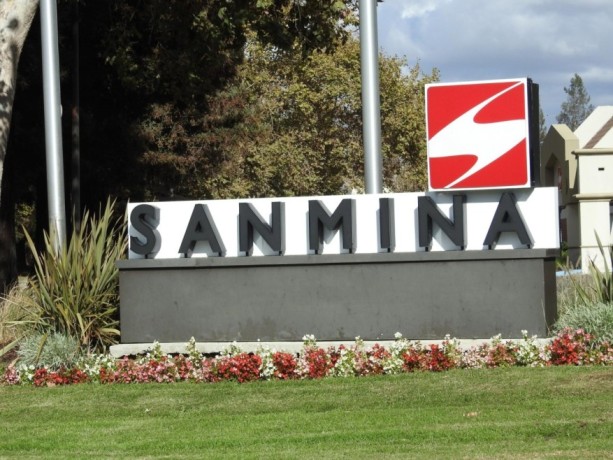Flex Ltd – An American-Singaporean Multinational Conglomerate Famous For Its Electronics Manufacturing Services (EMS)
The 51-years old company Flex Ltd offers electronics manufacturing services (EMS) and it is also an original design manufacturer (ODM). Joe McKenzie and Barbara Ann McKenzie founded the company in September of 1969. The company was previously known as Flextronics International Ltd and the company is currently based in San Jose, California. Simplicity and efficiency are the two key factors that Flex provides to its customers and help them grow in this competitive market. In 2019, Flex completed its journey of five decades in the electronics industry and also appointed Ms. Revathi Advaithi as its new CEO.
Flex Ltd – A Family Business
During the late 1960s, the silicon valley companies needed more printed circuit boards than they were able to produce in-house. So, Joe and Barbara McKinzie opened a family business called Flextronics where they hand-soldered every part on the circuit boards. Eventually, they automated the board construction, and the business growing in the 1970s. In 1980, the couple sold the company to Jack Watts, Joe Sullivan, and Bob Todd. After this acquisition, the company was converted to a contract manufacturer, and the next year it became the first American manufacturer that went offshore and established business in Singapore.
In the 1980s, the company expanded its solutions and started providing computer-aided design services (CAD), blueprinting printed circuit boards along designing. As Flextronics expanded its product range, it started landing big clients like Sun Microsystems. As the business boomed, the company started building facilities all over Asia but loss started escalating as the economic recession in the early 90s hit hard.

Surviving The Economic Depression
Flextronics went public just a few weeks before the stock market crashed and the economic recession started in the early 1990s. In order to survive the crisis, the company privatized all the Asian manufacturing facilities with the help of outside funding and eventually closed the US plants. Michael Marks became the CEO of this new private company which filed its IPO in 1994. Marks was determined to rebuild the company’s presence in the US and under his leadership, the revenue tripled within three years.
Between 1993 to 1998, Flextronics International Ltd completed 12 acquisitions and expanded its workforce by hiring more than 10,000 employees. The company built its industrial parks in the low-cost regions which included Poland, Mexico, Brazil, Hungary, China, and the Czech Republic. This helped the company bring down the logistics and transportation costs. In 1995, Flextronics received a contract from Microsoft and the products were smart home devices and wallet-size PCs. During this period Flextronics acquired companies like nChip, the Astron Group, and FICO Plastics Limited. In 1997, the company built a giant size R&D facility in San Jose, California, and a couple of new plants in China and Mexico.
Partnerships and Acquisitions
The Hungarian market for Flextronics developed as Hewlett-Packard made the company primary manufacturer for inkjet printers. In the mid-1980s, Flextronics acquired a bunch of companies that included Neutronics Holdings A.G., Conexao Informatica Ltd, DTM Products Inc, Energipilot A.B., and Altatron Inc. In 1999, Flextronics entered into a service partnership with Corio Inc and later that year announced the purchase of The Dii Group Inc for $2.4 billion. This acquisition to date is one of the biggest in the history of Flextronics.
In 2000, the company went into a five-year outsourcing contract with Motorola. With the advent of a new decade, the company made it among the top three best-managed companies by IndustryWeek. The series of acquisitions continued in the following years as well and by the end of the decade, it landed another big client which was LG Electronics. In 2015, the company’s name was replaced by Flex from Flextronics International Ltd.
In recent years, Flex acquired some of the very important companies which play a significant role in today’s cutting-edge innovative technology. For example, Flex acquired NEXTracker which is a famous solar tracker company followed by Wink Smart Home Platform for smart AI-based tech in our home.
Revathi Advaithi – CEO of Flex Ltd
Revathi Advaithi became the new CEO of Flex in 2019 and she is also an Advocate for women in STEM. Revathi completed her education at Birla Institute of Technology and Science and graduated with a mechanical engineering degree. In 2005, she completed her MBA from Thunderbird School of Global Management. Revathi worked at Eaton and Honeywell before joining Flex.

Annasha Dey is an NIT student, who apart from studying engineering is also a content writer. She has a great interest in photography, writing, reading novels, and travelling as well. She is a foodie who loves socializing and hanging out with her friends. She is also a trained Kathak dancer and a big fashion enthusiast. Dey also loves watching TV series, which includes F.R.I.E.N.D.S. and Big Bang Theory. To be a better writer she prefers to read more

